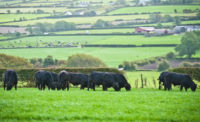“I think we may even see lower consumption for chicken” in 2009, he added. “I think we'll see a higher consumption of eggs as people shift from beef and pork to eggs and chicken to eggs.” He pointed out to examples in recent history when consumer consumption of protein declined in a country-wide recession.
“But you need to examine every part and every function of a particular company, determine what it is you do well, and then decide what can be done better by other companies and other countries,” he said.



Report Abusive Comment